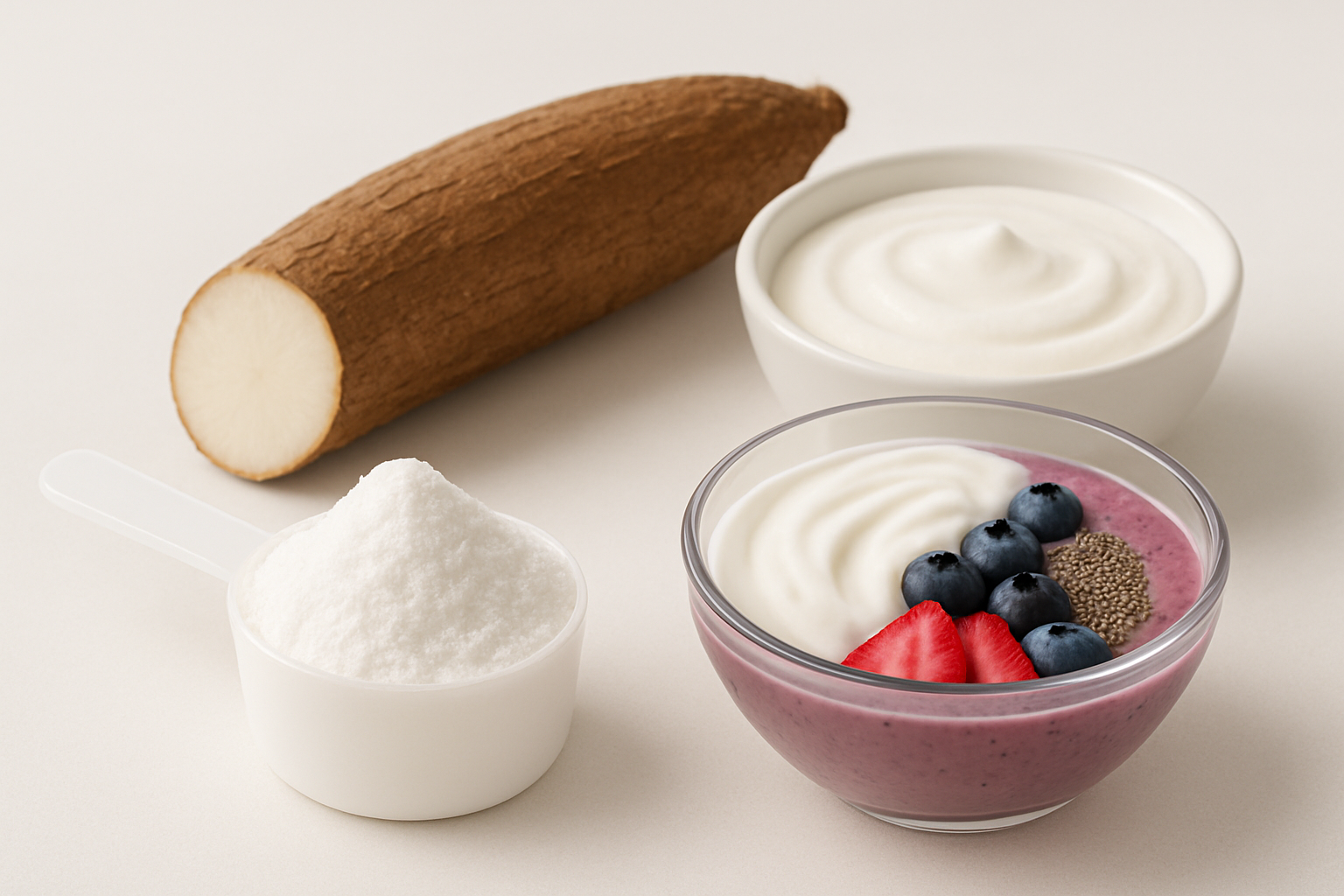

Published on Aug 07th, 2025

In today’s health-conscious market, consumers are looking for more than just sweetness. They want products that deliver taste, texture, and nutritional value, without the high sugar content that typically comes with indulgent foods. For food manufacturers, the challenge lies in reformulating products to meet these expectations without sacrificing sensory experience. Enter tapioca maltodextrin, a powerful ingredient that is quietly transforming the landscape of low-sugar product innovation.
What Is Tapioca Maltodextrin?
Tapioca maltodextrin is a white, powdery carbohydrate derived from tapioca starch, a plant-based source extracted from the cassava root. While it has a neutral flavor and no sweetness of its own, it plays a critical role in low-sugar formulations by contributing to the texture, mouthfeel, and stability of food products. It is also easily digestible and has a high solubility in water, making it suitable for a wide range of applications.
Why Use It in Low-Sugar Formulas?
Reducing sugar in a recipe is not just about replacing sweetness. It also means replacing bulk, texture, and the overall eating experience sugar provides. This is where tapioca maltodextrin excels. It offers several functional benefits:
Bulking Agent: It replaces the volume lost when sugar is reduced or removed, maintaining the consistency of the final product.
Texture Enhancer: It mimics the smooth, creamy texture associated with full-sugar versions, making it ideal for beverages, ice creams, sauces, and confections.
Carrier and Stabilizer: It can act as a carrier for flavors and fats, supporting better flavor dispersion and product shelf stability.
Applications Across Categories
Tapioca maltodextrin is already being used in various product categories, from sports drinks and energy bars to bakery items and dairy alternatives. Its neutral taste and versatile functionality make it easy to integrate into both sweet and savory applications without disrupting the product’s original flavor profile.
In snacks and cereal bars, it helps bind ingredients and improve texture.
In dressings and sauces, it supports emulsion stability and consistency.
In frozen desserts, it prevents ice crystallization and provides a smooth mouthfeel.
Clean Label Appeal
With its plant-based origin and label-friendly perception, tapioca maltodextrin aligns with clean label trends that continue to dominate the food and beverage industry. It is often preferred over corn-based maltodextrins by brands looking to avoid GMOs or diversify their ingredient sources. For consumers scrutinizing product labels, tapioca-based ingredients can offer an added layer of reassurance.
Meeting the Needs of Modern Consumers
Consumers today are more informed than ever. They are reading labels, researching ingredients, and making purchasing decisions based on both health and sustainability. Manufacturers that can deliver lower-sugar alternatives without compromising on taste or texture are well positioned to gain trust and market share. Tapioca maltodextrin makes this possible, not as a sweetener, but as a crucial building block in better-for-you product development.
Final Thoughts
As sugar reduction becomes a staple of product innovation, tapioca maltodextrin stands out as a must-have tool in the food formulator’s toolkit. It helps bridge the gap between indulgence and health, offering a practical solution that satisfies both regulatory demands and consumer expectations. For brands ready to reformulate, this ingredient isn’t just an additive, it’s a strategic advantage.
Looking to create low-sugar products that don’t compromise on taste or texture? Connect with our team to explore how tapioca maltodextrin can elevate your formulations.
BackBe the first to know about new products, events and offers.